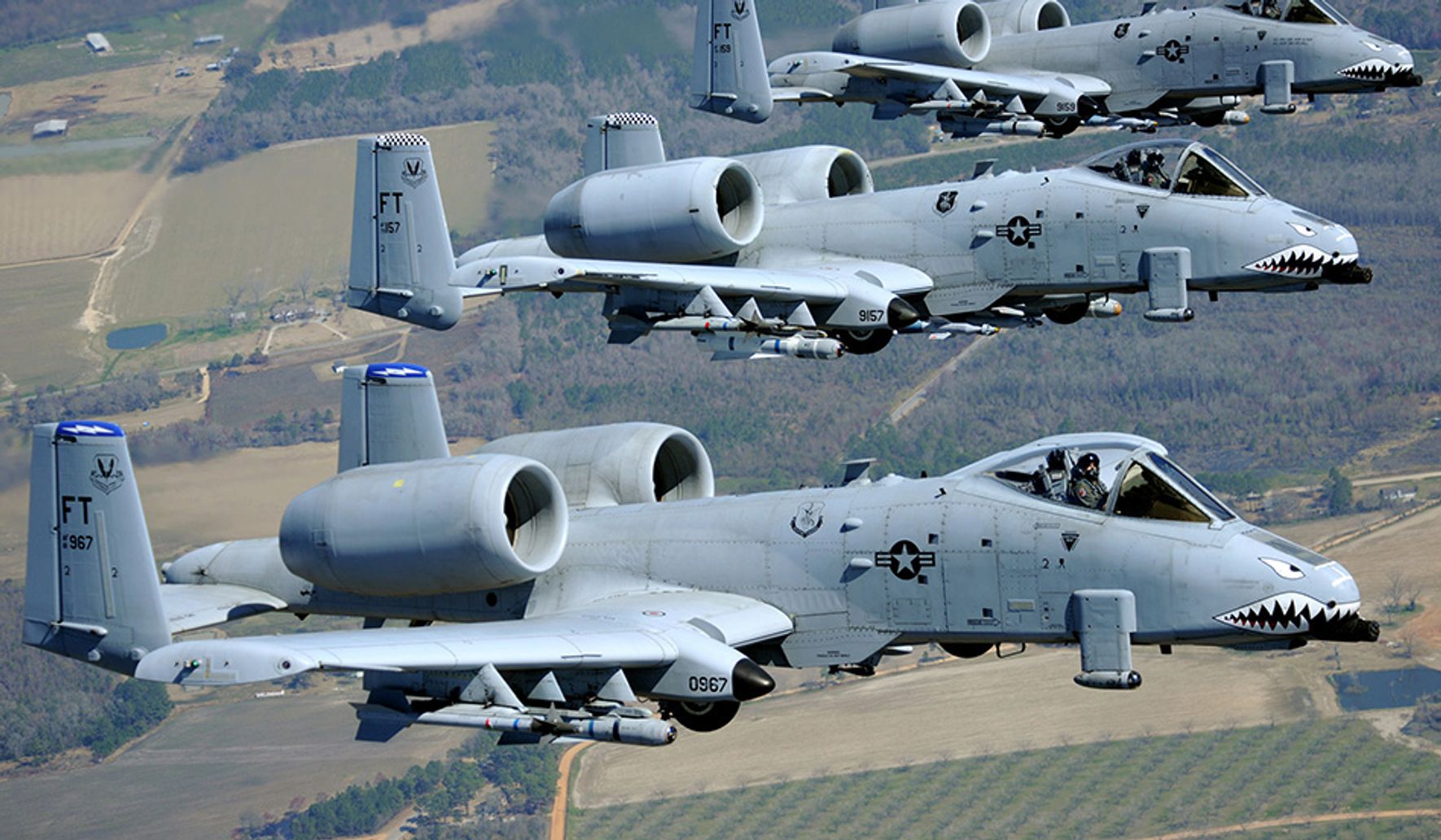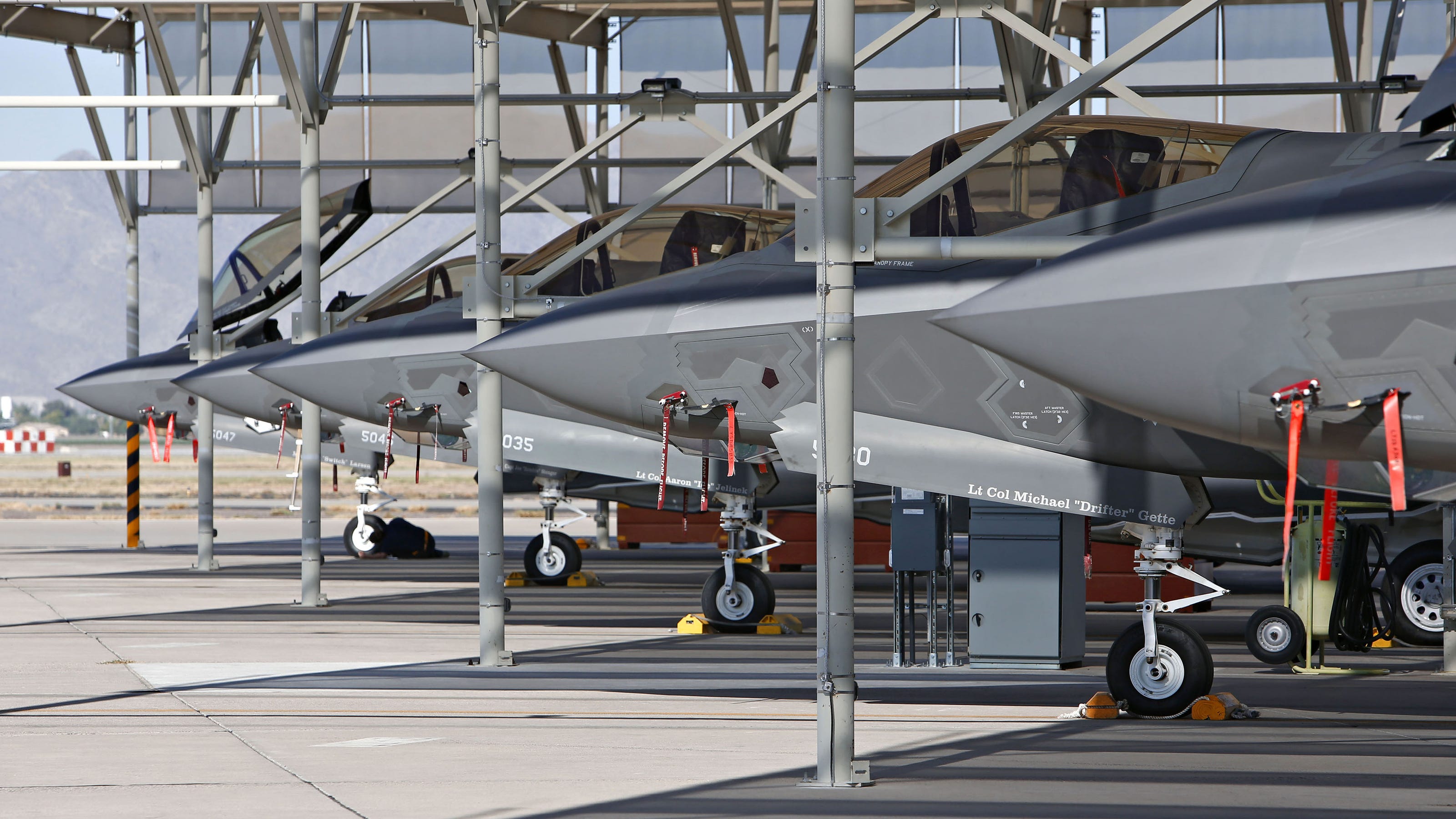Air Force Base Az - Luke Air Force Base (AFB) is located on 4,198 acres in Glendale, Arizona, approximately 13 miles west of downtown Phoenix. The base is approximately east of Arizona State Route 303, south of the Northern Parkway, west of Arizona Route 101 and north of Camelback Road. About 4,900 military personnel and dependents live on this base. Civilians and other military personnel who travel daily to off-base areas bring the base's total daily population to about 8,000.
In 2016, the US Environmental Protection Agency (EPA) announced health advisory levels (HAL) for perfluorooctanoic acid (PFOA) and perfluorooctane sulfonate (PFOS). PFOA and PFOS are members of the per- and polyfluoroalkyl substances (PFAS) family, and the combined (PFOS + PFOA) PFAS HAL is 70 parts per trillion (ppt). PFAS are a group of man-made chemicals with flame retardant properties that have been produced and used by various industries since the 1940s. PFAS are used commercially in the United States to make products such as carpets and water- and stain-resistant fabrics, food. packaging, fire extinguishers, as well as in other industrial processes. PFAS compounds at Luke AFB are (primarily) associated with firefighting foam (aqueous film-forming foam [AFFF]).
Air Force Base Az

Other pollutants associated with Luke AFB include organic solvents and paint removers, waste oil spills, oil spills, metal waste, hydraulic fluids, and radioactive waste. The soil is contaminated with waste oils and volatile organic compounds as a result of various local processes. Potential human health hazards include accidental ingestion or direct contact with contaminated materials.
Military Plane Spotting] Luke Air Force Base (glendale, Arizona, U.s.)
Media affected by Luke AFB include groundwater and soil. There are currently no known, non-reducing risks to human health. Risk mitigation measures have been implemented for known contaminants and locations.
Emerging PFAS contaminants have been detected in groundwater and soil both on and off Luke AFB. Emerging contaminant research is ongoing at Lucca AFB, both on-site and off-site. Additional information on groundwater resources can be found in the side links below See more.
Exposure to PFAS has been linked to potential adverse human health effects and is the subject of increasing regulation and litigation. Some studies have shown that some PFAS can increase the risk of cancer, affect the immune system and development of children. Additional research is ongoing. The most important route of human exposure to PFAS is through municipal drinking water or wells.
Other contaminants at Lucca AFB include organic solvents and paint removers, oil spills, oil spills, metal plastic waste, hydraulic fluids, and radiological waste. These pollutant-affected areas have ways to reduce their exposure and at the same time pose no threat to human health. Major routes of exposure were excluded through modification, limited access, and limited use. No underground groundwater wells are known to have been affected by these discharges. Groundwater is regularly monitored. Luke AFB protects human health and the environment from organic solvents and paint removers, oil spills, oil spills, metal waste, hydraulic fluids, and radioactive waste.
Two F 16's From Luke Air Force Base, Arizona, Fly In Formation Over Arizona Before Sunset Stock Photo
PFAS In 2015, Luke AFB inspected facilities where PFAS may have been used and PFAS containing water may have been released. These areas include fire training areas, accident sites, airports, storage buildings, warehouse buildings, wastewater treatment facilities, and water points. The Civil Engineering Center's (AFCEC) initial assessment focused on historic AFFF storage and release areas. An initial 2015 assessment recommended several areas of interest for site investigation. The results of the 2019 study showed the concentration of PFOA and PFOS in selected samples of soil and groundwater. The 2019 results prompted AFCEC to begin a site-wide investigation targeting a private well access request within one mile (south to southwest) of Luke AFB.
As of 2020, AFCEC has initiated a corrective review to confirm and quantify exposure to PFOA and PFOS. AFCEC also continued an extensive site survey, selecting public water systems and private wells up to 4 miles downstream (south-southwest) of Luke AFB.
By early 2021, the command staff at Luke AFB had notified public water supplies and private water wells above the EPA HAL that mitigation measures had been taken, and each quarter, private wells that exceeded can be seen on 35 pages. But less than HAL 70 ppt.

Installation sites in 2017 released the Fourth Five Year Review (FYR). FYR determined that all solutions work as designed, still protect human health and the environment, and control exposure pathways that could lead to unacceptable risks. The next FYR will be in 2022.
Luke Afb Squadron Departs To New York For Covid 19 Aid
By 2023, Luke AFB's goal is site closure for most of the sites listed in the FYR. The U.S. Air Force determines site closure when the regulatory agency or agencies agree that active management and monitoring of the environmental site has ended. That is, chemicals of concern (COC) have been modified and/or removed to meet project action levels and long-term monitoring (LTM) and/or institutional controls (ICs) are not required by the regulator and US Air. . strength
AFCEC continues to conduct on-site and off-site remedial surveys for PFAS-affected areas 4 miles downstream (south-southwest) of the base. The research will be conducted in several phases and field work is expected to be completed by 2023.
Installation sites under LTM or IC are in various stages of selection, reporting and closure. The next FYR assessment for these sites will be reported in 2022. Luke Air Force Base in Glendale is highlighted in red on a map of metro Phoenix that compares the rate of new COVID-19 infections over the past week, but the base's health director says the map may not paint the full picture.
New transfers to a facility that test positive may not yet have an Arizona address to report to the state health department. According to the major, in these cases, Luke uses the index of the test center at the base. David Sanders, commander of the base's health flight.
Aerial View Of Luke Air Force Base
He's also investigating whether people who live in neighboring single-family homes in different zip codes can match the database's data.
Still, he acknowledges that many young people — among the roughly 700 people who live in the base's dormitories — don't always take the pandemic as seriously as they should.
"We have an age group that thinks they're not shooting. Whenever they have free time, they're in Flagstaff or Sedona," Sanders said. "And the next thing I know, they're in our line of sight."
Overall, Arizona has seen an increase in cases of the virus. The state reported 4,471 new cases on Friday, the most new cases of COVID-19 since July 1.
Dateland Air Force Auxiliary Field
The ZIP code that includes Luke and its main neighborhoods, 85309, saw an average of seven new cases a day last week. The zip code has only about 700 residents, which accounts for 96 new cases per 10,000 people.
The zip code across Litchfield Road, 85307, includes the base family residence. The country has seen about the same number of new cases as a week, with an average of six per day. But the data shows that the area has more than 11,000 residents, a figure of just five new cases per 10,000 people.
Anyone who depends on Luke - from other branches of the military or civilians who live in off-site housing - can be tested on the base. Sanders said it's not unusual for the primary clinic's zip code to be reported to the state instead of the patient's residential zip code.
Stephanie Silvera, an epidemiologist and professor of public health at Montclair State University in New Jersey, raised this issue at length in April of the Arizona Department of Health. He said such repetition could muddy the data.
Air Force Eyes Small Arizona Sites For Rescue Training
"If you don't get good data, you can't interpret that data on the other side," Silvera said.
But the Arizona Department of Health Services says more than 90 percent of the cases in the reported data are mapped to the patient's address, not the testing center's address.
Spokesman Sean Clements said: "Everyone at the base is required to wear a mask if they are six feet apart." He said some groups could impose stricter rules if they were to work in close quarters that would require more masks.

If a person living in a dormitory tests positive for Covid-19, they should be quarantined in their dormitory, Sanders said. If they have roommates, the roommates will be assigned a new dorm and must also self-quarantine. If workers are on the job within 48 hours of showing symptoms, they will disinfect the workplace, he said.
Potus Lands At Luke Afb > Luke Air Force Base > Article Display
Luke's Housing Community and University of Arizona are facing some challenges: keeping young people safe in overcrowded housing. Universities have done everything from keeping certain rooms empty as designated spaces to moving or rearranging furniture in common areas.
When a positive case develops in Luke, officials begin contact tracing and notify anyone they can find who may have been in contact with the infected person, Sanders said.
Tucson az air force base, stewart air force base, chanute air force base, yuma az air force base, air force base phoenix az, air force base apartments, air force base glendale az, az air force base, otis air force base, luke air force base az, williams air force base az, selfridge air force base
0 Comments